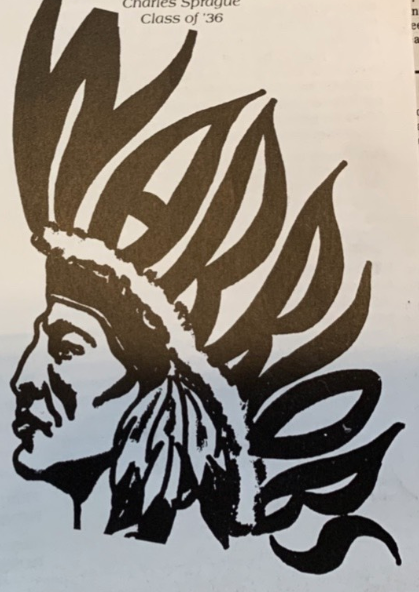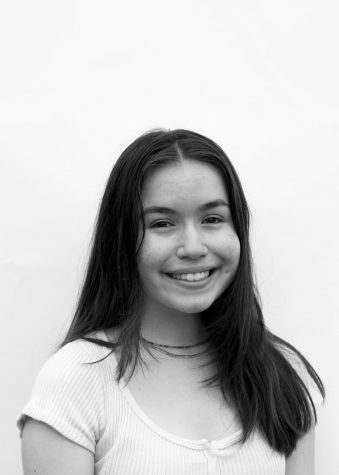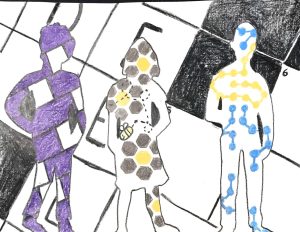School Committee Moves to Condemn Continued Use of Harmful Mascot

Courtesy of 1989 “Register Forum”
A recent petition that circulated social media caused uproar about CRLS’ old “Warriors” mascot.
October 6, 2020
In early June, the use of a former mascot, deemed racist by many Cantabrigians, as a logo on merchandise for Cambridge Alumni was brought to the attention of the Cambridge Public Schools (CPS) community. A petition to discontinue the use of the logo gained momentum, and on Tuesday, September 15th, the School Committee met and reached a resolution regarding the petition. CRLS alumna, and leader in creating the petition, Tina Groeger ’04, recalls first seeing the logo on a directory. Produced by the Rindge Tech Alumni Association (RTAA), the directory was intended to encompass all Cambridge alumni, including those of the Rindge Technical School, Cambridge High and Latin, and the Cambridge Rindge and Latin School (CRLS).
In 1977, Rindge Tech and Cambridge High were combined to form CRLS. The mascot, intended to depict an indigenous person and betoken the Rindge Tech “Warriors,” was first employed by Rindge Tech in 1972 and went on to represent Cambridge through CRLS, until an indigenous student in 1989 brought the issue to the administration, and it was abolished.
Groeger then alerted other alumni about the mascot, and together they created a petition to the School Committee. The petition now has over 900 signatures; Groeger told the Register Forum that she credits its success to the circulation of the petition, among students and alumni, by the CRLS Black Student Union on social media.
The meeting opened with remarks from Mattingly Wood ’20, the author of an op-ed in the Cambridge Chronicle on the district’s failure to support Native American students. During public remarks, Wood told the Committee, “The continued use of the “Warriors” logo is completely racist and goes against all the anti-racism work that Cambridge and Cambridge Public Schools is trying to do.”
Student school committee members Anais Killian ’22 and Nuriel Vera-Degraff ’22 offered their support for the motion during the meeting, calling for the city to “retire any connection [to] and use of the offensive Warriors logo.” The committee ultimately moved to issue two statements: one condemning organizations which continue to use the logo, and one apologizing to all CRLS alumni, clarifying that the logo was used without the consent of the CRLS alumni association.
The proposed discontinuation of the mascot was met with strikingly similar opposition this summer as it was three decades ago. Groeger faced backlash from members of the RTAA on a general Cambridge Alumni Facebook group, who have frequently cited tradition as the cause of their attachment to the logo, and even removed Groeger after her clear dismay. One of these such members, Ted Darling, was present at the original School Committee meeting in 1989 to decide the future of the logo. The meeting was recorded in an article by the Harvard Crimson, where his only statement was reported as, “We just want to keep it.” Alumni in favor of using the mascot, though not present at the School Committee meeting on the 15th, predominantly attended the school before 1989, when the mascot was still officially in use, inspiring strong sentimentality.
Moving forward, the prospects of positive impact are unclear. Due to a lack of official connection or funding, the School Committee is limited to its accomplishments of clarifying their official stance, issuing statements of apology, and severing any ties with the Rindge Tech Alumni Association, which were few in number to begin with. Wood told the Register Forum, “I think of the Native American students who were there when CRLS actually had the mascot.” She continued, “I just know that an apology could not make up for their feelings of being disregarded and having a mascot be a stereotype of themselves.” Wood described further steps that could be taken, explaining that, “Teachers could definitely be briefed on something like, ‘If there’s a Native American student, what do you do in that situation?’” Without such measures taken, Wood elaborated, an isolating environment would be created. “There could be one student who hasn’t talked about their identity, and they could feel very alone learning such painful material. This even continues with teachers generally getting briefed on the experiences of students of color, and working that into the curriculum.”
Vera-Degraff also expressed concern at the reach of the motion, telling the Register Forum, “It’s clear that all of these actions will not entirely fix the issue of racism against indigenous peoples.” However, he shared his hope for the resolution’s influence in the community. “Still,” Vera-Degraff continued, “I believe the adoption of the motion brings us much closer to reaching justice.”
Groeger also has hope for larger change gaining momentum with technical municipal victories and motions, though they may seem overdue. “When doing outreach on this issue, I was seeing lots of similar petitions in other parts of the country about racist mascots and even more substantive issues about defunding policing in schools. I think this is now a moment where people have had enough, and are saying ‘No, we need to put our foot down.’” Groeger concluded, “This [resolution] is part of a broader movement targeting both symbols of racism and structural racism in schools in the form of police and other violence.”









